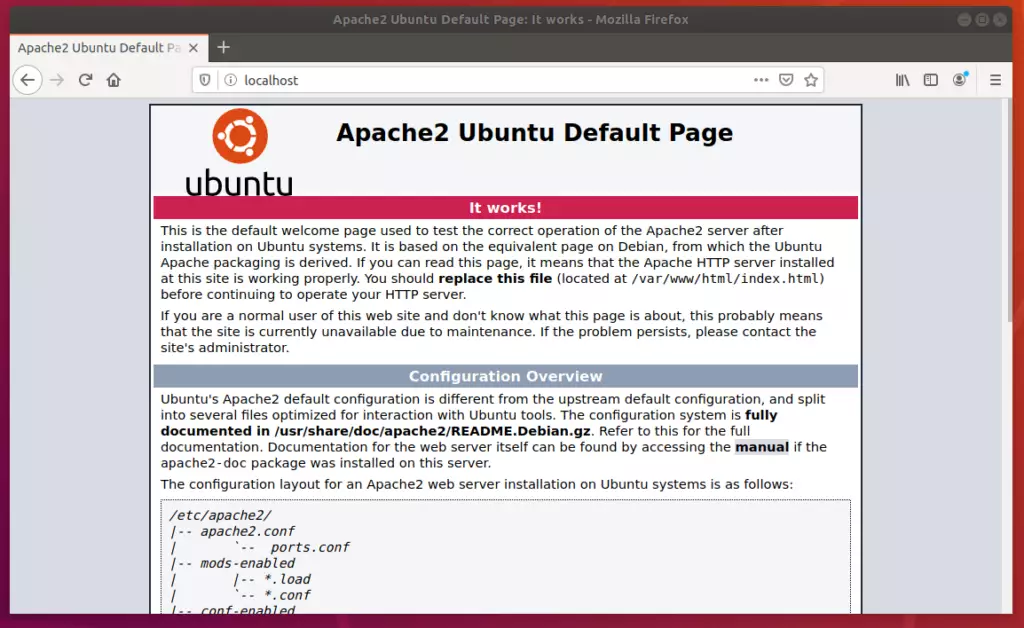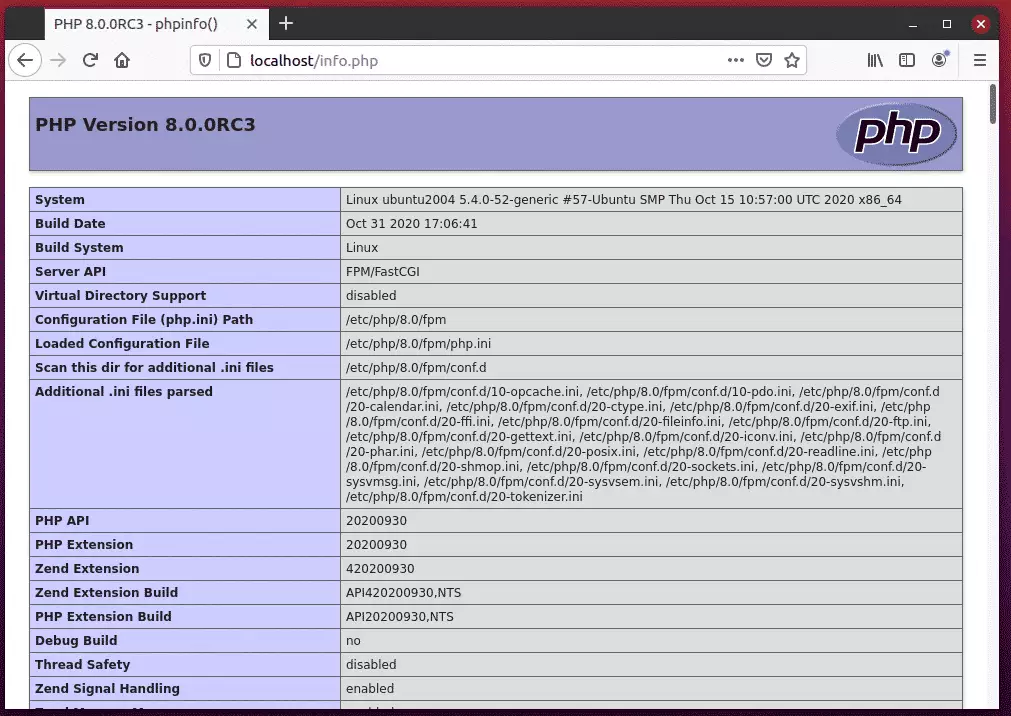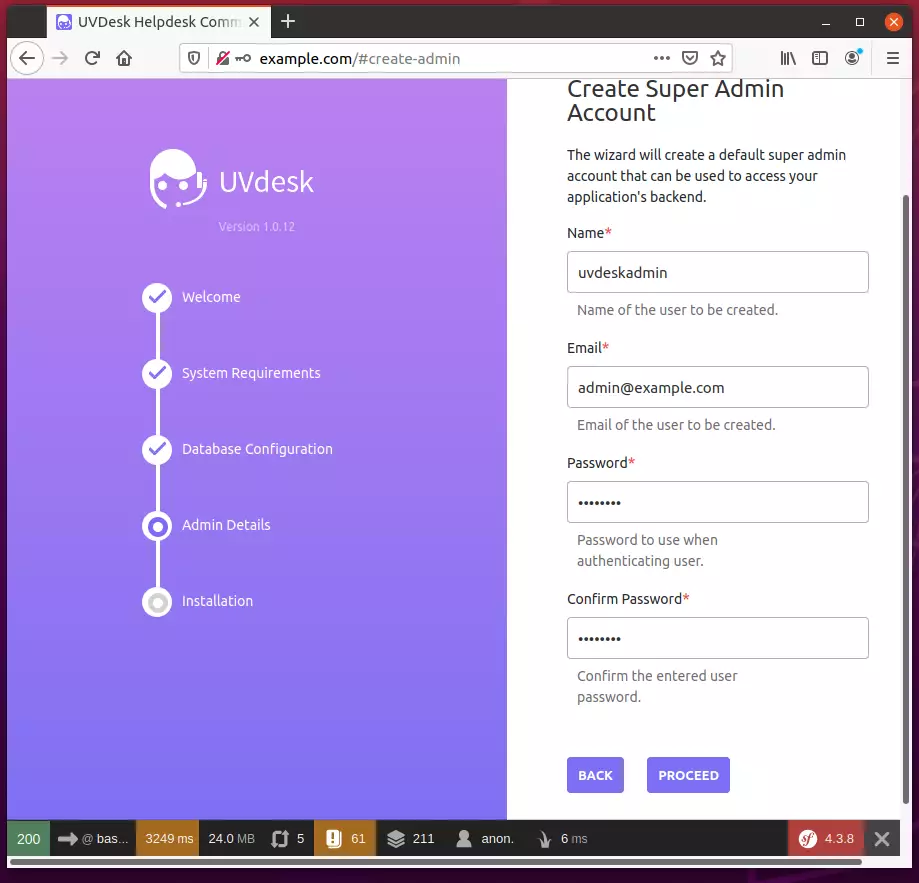This brief tutorial shows students and new users how to install UVdesk ticking systems on Ubuntu 20.04 | 18.04.
UVdesk is an open-source helpdesk system that provides complete support solutions for any business process to deliver the best customer service. UVdesk is flexible and user-friendly and can serve as a solid alternative to the widespread support platforms today.
Installing UVdesk with Apache on Ubuntu Linux is a great way to provide customer support solutions for any business process. Apache2 HTTP Server is the most popular web server that UVdesk needs to run. MariaDB, an open-source database server, is also required to store UVdesk’s content.
With the help of PHP, Apache2, and MariaDB, UVdesk can be installed on Ubuntu Linux to provide users with a flexible and user-friendly support platform. The process of installation involves installing Apache2, MariaDB, PHP, and related modules, creating a database for UVdesk, granting access to the database, installing Composer, Cur,l, and other dependencies, downloading UVdesk packages from GitHub, setting permissions for UVdesk and configuring Apache2.
Once the installation is complete, users can access UVdesk through their web browser and begin to provide customers with support solutions.
To get started with installing UVdesk, follow the steps below:
Install Apache
Apache2 HTTP Server is the most popular web server. So install it since UVdesk needs it.
To install Apache2 HTTP on the Ubuntu server, run the commands below.
sudo apt update sudo apt install apache2
After installing Apache2, the commands below can stop, start, and enable the Apache2 service to always start up with the server boots.
sudo systemctl stop apache2.service sudo systemctl start apache2.service sudo systemctl enable apache2.service
To test the Apache2 setup, open your browser and browse to the server hostname or IP address. You should see the Apache2 default test page, as shown below. When you see that, Apache2 will work as expected.
http://localhost

Install MariaDB
UVdesk also needs a database server to store its content, and the MariaDB database server is a great place to start when looking at open-source database servers to use with UVdesk.
To install MariaDB, run the commands below:
sudo apt update sudo apt install mariadb-server mariadb-client
After installing MariaDB, the commands below can stop, start, and enable the service to start when the server boots.
sudo systemctl stop mariadb.service sudo systemctl start mariadb.service sudo systemctl enable mariadb.service
When done, run the commands below to secure the MariaDB server by creating a root password and disallowing remote root access.
sudo mysql_secure_installation
When prompted, answer the questions below by following the guide.
- Enter current password for root (enter for none): Press the Enter
- Set root password? [Y/n]: Y
- New password: Enter password
- Re-enter new password: Repeat password
- Remove anonymous users? [Y/n]: Y
- Disallow root login remotely? [Y/n]: Y
- Remove test database and access to it? [Y/n]: Y
- Reload privilege tables now? [Y/n]: Y
Restart the MariaDB server when done.
Create UVdesk database
Now that you’ve installed all required packages continue below to start configuring the servers. First, create a blank database for UVdesk to use.
To do that, run the commands below to log on to MariaDB. When prompted for a password, type the root password you created above.
sudo mysql -u root -p
Then, create a database called uvdesk
CREATE DATABASE uvdesk;
Create a database user called uvdeskadmin with a new password
CREATE USER 'uvdeskadmin'@'localhost' IDENTIFIED BY 'new_password_here';
Next, grant the user full access to the uvdeskadmin database.
GRANT ALL ON uvdesk.* TO 'uvdeskadmin'@'localhost' WITH GRANT OPTION;
Finally, save your changes and exit.
FLUSH PRIVILEGES; EXIT;
Now that the MariaDB server is installed and a database created go and install UVdesk.
Install PHP and Related Modules
PHP 7.4 may not be available in Ubuntu default repositories. To install it, you will have to get it from third-party repositories.
Run the commands below to add the below third party repository to upgrade to PHP 7.4
sudo apt-get install software-properties-common sudo add-apt-repository ppa:ondrej/php
Then update and upgrade to PHP 7.4
sudo apt update
Next, run the commands below to install PHP 7.2 and related modules.
sudo apt install php7.4 libapache2-mod-php7.4 php7.4-common php7.4-gmp php7.4-curl php7.4-intl php7.4-mbstring php7.4-xmlrpc php7.4-mysql php7.4-gd php7.4-xml php7.4-imap php7.4-mailparse php7.4-cli php7.4-zip
After installing PHP 7.4, run the commands below to open the PHP default config file for Apache2.
sudo nano /etc/php/7.4/apache2/php.ini
Then, save the changes on the following lines below in the file. The value below is an ideal setting to apply in your environment.
file_uploads = On allow_url_fopen = On short_open_tag = On memory_limit = 256M upload_max_filesize = 100M max_execution_time = 360 max_input_vars = 1500 date.timezone = America/Chicago
After making the change above, please save the file and close it.
Next, enable Apache modules for FastCGI support, then restart the Apache service.
sudo systemctl restart apache2.service
To test PHP 7.4 settings with Apache2, create a phpinfo.php file in the Apache2 root directory by running the commands below
sudo nano /var/www/html/phpinfo.php
Then, type the content below and save the file.
<?php phpinfo( ); ?>
Save the file. Then browse to your server hostname followed by /phpinfo.php
http://localhost/phpinfo.php
You should see the PHP default test page.

Install UVdesk
To get UVdesk’s latest release, you may want to use the GitHub repository. Install Composer, Curl, and other dependencies to get started.
sudo apt install curl git curl -sS https://getcomposer.org/installer | sudo php -- --install-dir=/usr/local/bin --filename=composer
After installing curl and Composer above, please change it to the Apache2 root directory and download UVdesk packages from GitHub.
sudo mkdir /var/www/uvdesk sudo chown $USER:$USER /var/www/uvdesk cd /var/www/uvdesk composer clear-cache composer create-project uvdesk/community-skeleton helpdesk-project
After running the commands above, you should see a success message similar to the one below:
To start things off, here are a few commands to help you setup:
* Configuring your project:
php bin/console uvdesk:configure-helpdesk
* Run your project through a local php web server:
php bin/console server:run
Made with 💖 by the UVDesk Team. Happy helping :)
Then, run the commands below to set the correct permissions for UVdesk to function.
sudo chown -R www-data:www-data /var/www/uvdesk/ sudo chmod -R 755 /var/www/uvdesk/
Configure Apache
Finally, configure the Apahce2 site configuration file for UVdesk. This file will control how users access UVdesk content. Run the commands below to create a new configuration file called uvdesk.conf.
sudo nano /etc/apache2/sites-available/uvdesk.conf
Then copy and paste the content below into the file and save it. Replace the highlighted line with your domain name and directory root location.
<VirtualHost *:80>
ServerAdmin [email protected]
DocumentRoot /var/www/uvdesk/helpdesk-project/public
ServerName example.com
ServerAlias www.example.com
<Directory /var/www/uvdesk/helpdesk-project/public/>
Options +FollowSymlinks
AllowOverride All
Require all granted
</Directory>
ErrorLog ${APACHE_LOG_DIR}/error.log
CustomLog ${APACHE_LOG_DIR}/access.log combined
</VirtualHost>
Save the file and exit.
Enable the UVdesk
After configuring the VirtualHost above, please enable it by running the commands below.
sudo a2ensite uvdesk.conf sudo a2enmod rewrite sudo systemctl restart apache2.service
Then open your browser and browse to the server domain name. You should see the complete UVdesk setup wizard. Please follow the wizard carefully.

The wizard will check your MySQL database connection for any issues and configure it with your application.
Type in the database and user you created above and continue.

The wizard will create a default super admin account that can be used to access your application’s backend.
Create a UVdesk super admin account.

Proceed with the wizard until you’ve successfully installed the platform. Then, done, start using it.

That’s it!
Conclusion:
This post showed you how to install UVdesk on Ubuntu 20.04 | 18.04. If you find any error above, please use the form below to report.

Leave a Reply